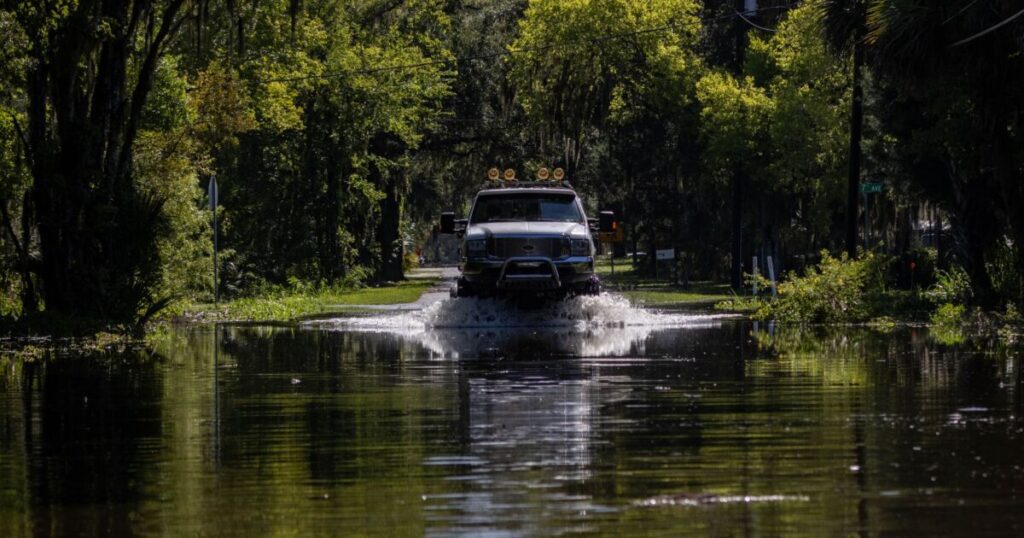Weathering the storm: Complexities of homeowners insurance in Florida

The combination of Florida’s unique geography and the impact of climate change means that the state is increasingly prone to flooding and hurricanes, which has resulted in skyrocketing insurance rates for homeowners. Both insurers and residents must address the underlying causes of this growing crisis, while also exploring solutions that benefit all parties.
Rising home insurance costs
Homeowners insurance rates in Florida have always been above the national average, but in recent years they have risen to unprecedented levels. In 2019, the average rate in Florida was $1,989 compared to the national average of $1,272. This year, the rate for equivalent coverage is expected to lie between $3,600 and $4,200, compared to the national average of $2,417.
The bad news is not limited to homeowners – the rising cost of claims, compounded by an inflationary economy, worker shortages, and supply chain backlogs are driving insurers out of Florida, as well as other states with turbulent climates.
Lack of profitability
Historically, Florida has never been profitable for insurance companies. The state’s coastal location exposes it to severe weather, including storms, hurricanes, and floods, all of which undermine the traditional insurance model where a small group of people draw from a pool of available funds.
However, severe weather events result in everyone drawing from the pool at once. A recent example was Hurricane Ian, which resulted in almost 400,000 homeowner insurance claims and the insolvency of six property insurance companies.
Flooding, fraud and litigation
Given Florida’s low elevation and the fact that more than half of the state’s population lives near sea level, floods are a constant threat and expensive and risky to insure. If an insurance company covers half of Florida and all its clients live in a flood zone, for example, the lack of profitability in the event of flooding is of significant concern.
Another challenge is pervasive fraud. A key example is roof repair fraud, where roofers seek inflated payouts by abusing the claims process and threatening insurance companies with expensive litigation if they refuse to meet their initial damage estimates. The result is higher premiums for homeowners and an exodus of insurers unwilling to countenance the spiraling underwriting costs arising from such litigation.
Crux of the crisis
These issues mean that insurance companies have no choice but to increase rates or simply leave the state. In the last year, Florida experienced a 20-30% increase in rates to fund replacement costs while every storm triggered another wave of insolvencies.
The mass exodus of homeowners insurance companies, including Florida-founded Progressive, also threatens to create a monopoly, with Florida’s state-run agency – Citizens – the last insurer standing. Without competition, Citizens can in theory raise premiums, per regulator approval. However, Florida homeowners are legally obliged to take out home insurance if they hold a mortgage – so if that insurance becomes unaffordable, there will be ramifications beyond merely protecting the property.
To address this issue, the state government of Florida is making efforts to lower the cost of insurance by bundling flood and homeowners insurance, though these efforts have proved ineffective so far. Even if the state were to take stronger actions, it could be years before premiums stabilize or decrease.
How to solve
Combating these issues requires productive legislation from the state. For instance, Florida could model its insurance system after areas exposed to hurricanes or extreme weather, such as Texas or states on the eastern seaboard. Florida does not have income tax, so property tax revenue is a key part of the state’s budget. As a result, a decreasing number of homeowners put off by insurance premiums, would have negative consequences for the state’s treasury.
Another option is for carriers to invest in risk mitigation and prevention programs where homeowners are incentivized to fortify their properties against extreme weather. This could include discounts for protective measures such as storm shutters or impact-resistant windows. Carriers could also collaborate with regulatory agencies to avoid drastic rate increases and they could better educate homeowners about the importance of insurance, risk management, and how to choose the right coverage.
In short, stricter regulations on rate hikes, legislation that addresses affordability, and a transparent rate-setting process could stabilize premiums and benefit the overall market.
Implications of technology
Another outcome of climate-related claims is the growing use of smart home technology that helps detect fire and flooding and makes it easier for insurers to assess risk and prevent future damage and losses. Automated claims management systems also have a role to play in driving down risk and costs. These include drones for on-site inspections, interpreting visual data with AI-based algorithms and automating the claim adjudication processes. However, implementing these technologies at scale could be quite costly and may increase the risk of fraud.
Proactive steps for homeowners
An important first step for homeowners is to save a portion of their income for potential disaster and premiums. Also, bundling different types of insurance including home, auto, and life has the potential to lower costs and make coverage more affordable or raise their deductible to access lower premiums. However, at the end of the day, until legislation or a new system is implemented, insurance will remain a vexed issue for Florida homeowners.


